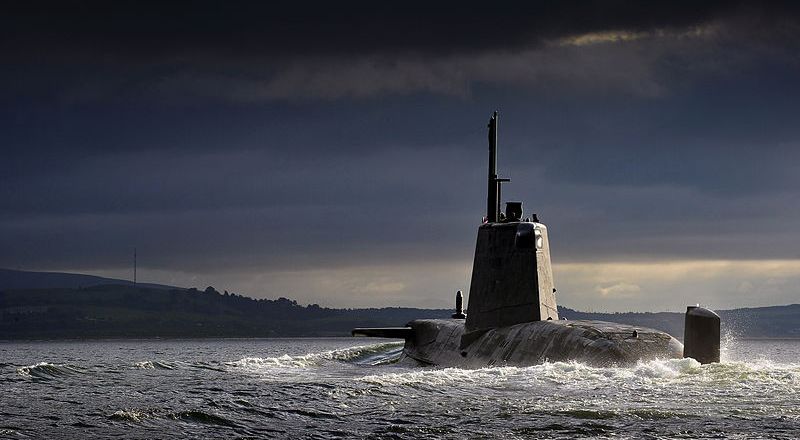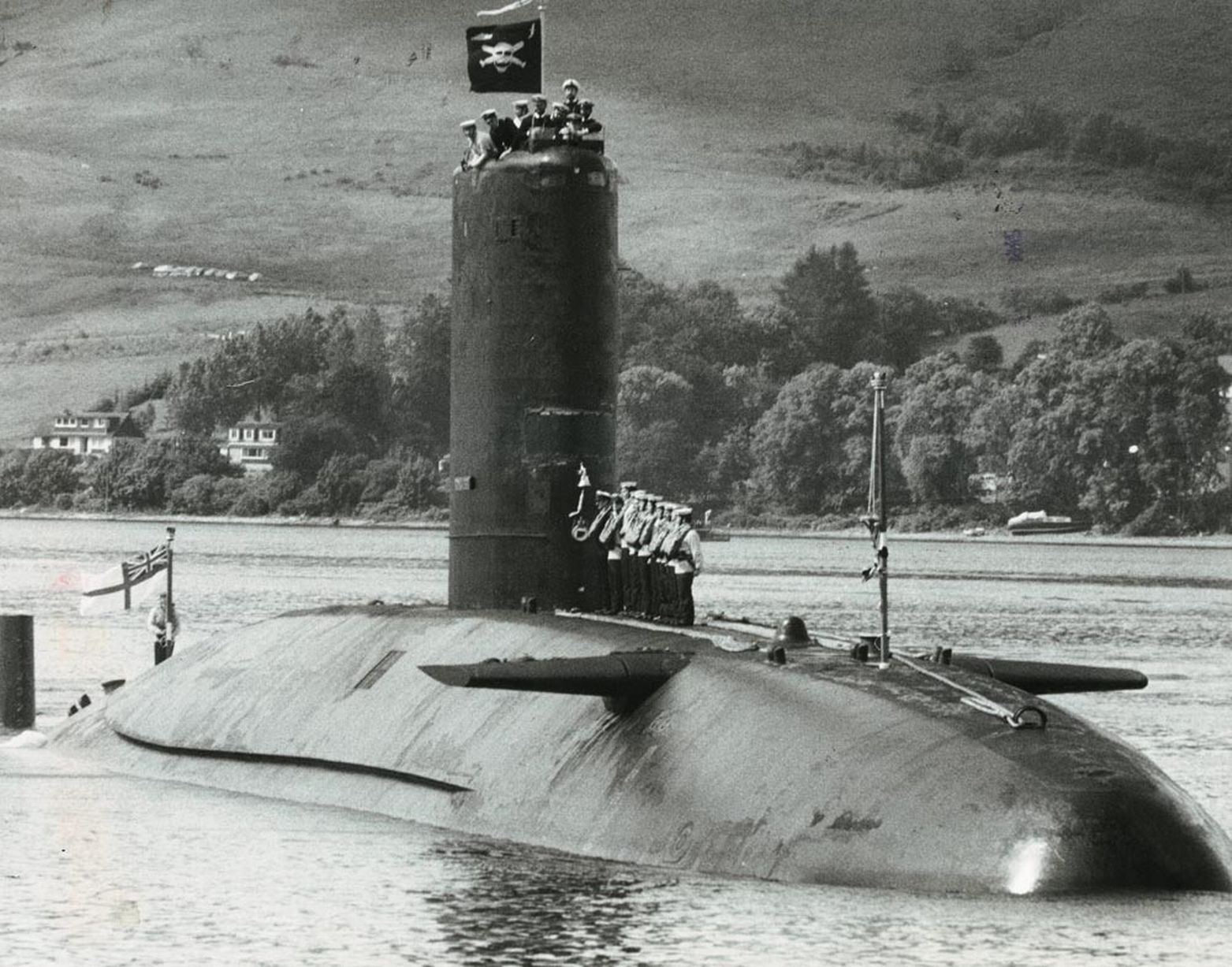HMS Ambush (Astute-class) returning to HMNB Clyde. Photo Crown Copyright
The submarine is one of man’s great inventions. Like flight, the submarine does something that all good sense says a boat should not do, sink. It’s ability to return to the surface is that magic quality akin to an aircraft taking off. Yet, whereas we are used to the commonplace airplane, the submarine’s almost purely military use has meant that it’s abilities have been shrouded in the cloak of death. It is an incredibly effective weapon of war, one that has always induced dread and misunderstanding. The fact that the principles that allow a submarine to slip beneath the surface of the waves were discovered by a Greek having a bath, only adds to the mystique of the submarine. Iain Ballantyne’s new book, The Deadly Trade: The Complete History of Submarine Warfare from Archimedes to the Present, takes us from Archimedes’ tub to the machines of today, that can lay waste to much of the world.
The history of the submarine is one of equal parts dream and dread. When Archimedes climbed into the bath and realised that he displaced his exact weight in the water, he had his “Eureka!” moment and founded the principle of buoyancy. The idea of underwater warfare by this time wasn’t new. Divers had been at work for years, trying to undermine enemy shipping. But with the basics of the maths founded, men would dream of taking a ship beneath the waves and, crucially, bringing it back up again. In the 17th century, Dutch inventor Cornelius Drebbel invented a prototype submarine and allegedly took James I for a trip under the Thames. But, while many adventurers, cads and inventors had tried all manners of craft in the preceding years, it wasn’t until the dawn of the 20th century that submarines became practicable.
With the outbreak of the First World War, the Navies of the great powers were blinded by the big gun battleship and it’s sister class, the battlecruiser. These massive capital ships faced off against each other in the North Sea and, promptly, did next to nothing for two years. The Submarine Service was seen as the ungentlemanly service. Sneaking up on a ship and putting torpedoes into it, didn’t seem how you played the game. Yet, as the War ground on, the submarine came into its own. The way the submarine was used by Germany is one that dominated our histories, but in The Deadly Trade we are introduced to the aces of all sides that created the blueprint in how how the Silent Service still operates. Men like Hans Rose who would take U-53 into American waters for the first time, or the legendary, controversial, Max Horton who started the tradition of Royal Navy boats flying the Jolly Roger following a successful cruise, laid the framework for the men that would follow. Ballantyne knows that the men who took these craft to sea are as remarkable as the boats themselves, so writes in such as way that we never get bogged down in the technology alone.
HMS Barham exploding after being stuck by three torpedos from U-331 in 1941
As Ballantyne’s history moves forward, the way the submarine is used changes, but what is fascinating is the way that the fear of the submarine only ever grows. The chapters on the Battle of the Atlantic are utterly engrossing. Ballantyne shows how Karl Doenitz faced off against the still going Horton and Percy Noble, the Admiral in charge of the defence of the Western Approaches, and the way the upper hand past back and forth, with each change being paid in blood and tonnage. Ballantyne looks at myths and tales and brings us fact, which is more fascinating. In the Pacific, the war was fought with a blood chilling ruthlessness that would have given a U-Boot Kaptain pause. The American commanders would hunt with vengeance in their hearts and, as such, the theatre was darker and colder, even in warmer seas.
The Cold War brought the proliferation of nuclear weapons and nuclear powered boats that never need to surface changed the dimensions of the trade. It is this section that I found most fascinating. Covering the longest period of time and a much larger variety of nations involved. Ballantyne looks at the development of the ballistic nuclear boats as well as the hunter-killers deployed to find and remove them. From the cat and mouse high stakes games played in the Atlantic, to the hot conflicts between India and Pakistan, Ballantyne shows how the submarine has become the prestige warship that the battleship once was. The modern nuclear powered, and armed submarine, is now the most complex machine man has ever created. They can race to a position off just about any coast in the world and be an insurmountable element of force projection. We only have to look at the impact HMS Conqueror had in the Falklands War, sinking the Belgrano, or of a submarine launching Tomahawks cruise missiles against targets thousands of miles away to know that we live in the age of the submarine.
HMS Conqueror flying the Jolly Roger on return from the Falklands in 1982
The Deadly Trade is a hefty tome, but Iain Ballantyne brings a heart to the story of this machine and the men who lived, fought and died in them, that leaves you in slight awe. For every sinking of the Royal Oak in Scapa Flow, there are many pages of how the submarine was countered and the huge numbers of men, on all sides, who have died in the pitch black of a crippled submarine as she makes her final dive to the depths of the ocean. Ballantyne doesn’t take sides, but discusses the usage of this weapon and explains the reasons behind the deployments and, where needed, is equally hard on all sides. This balance, coupled with an engaging style and clear love for his subject, makes The Deadly Trade a fascinating and engrossing read. Iain Ballantyne has written a true tribute to the hunters and hunted and those who will forever be on patrol.
The Deadly Trade: The Complete History of Submarine Warfare from Archimedes to the Present by Iain Ballantyne is published by Weidenfeld & Nicolson, RRP £25.00, and is out now.
The Russian Borei-class K-535 Yuriy Dolgorukiy ballistic nuclear submarine. She carries 16 ICBMs with a total of 96 nuclear warheads.





Leave a Reply